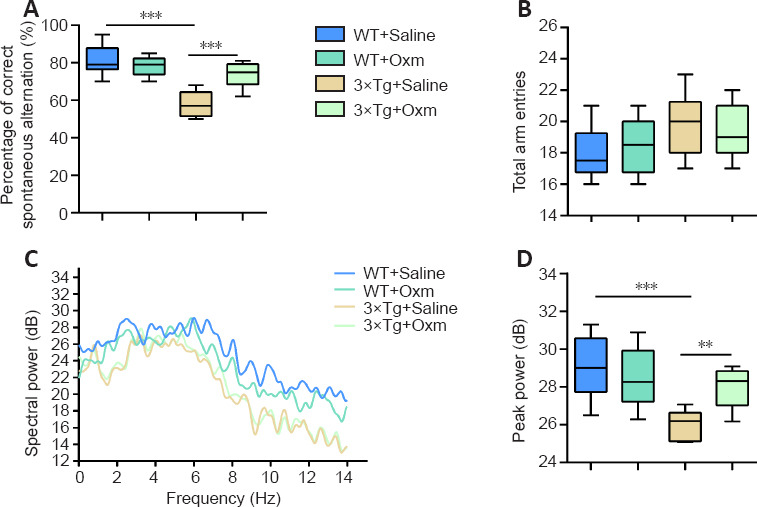Figure 1.

(D-Ser2) Oxm improves working memory and influences theta rhythm in 9-month-old 3xTg mice.
(A, B) Percentage of correct spontaneous alternation and total arm entries in the Y-maze test. (C) Typical trend of theta rhythm (frequency between 4–10 Hz) in mice entering the correct arm within 5 seconds in the Y-maze. (D) Peak power of theta rhythm within 5 seconds after the mice entered the correct arm in the Y-maze. All values are shown as mean ± SEM (n = 10). **P < 0.01, ***P < 0.001. Statistical comparisons were performed using two-way analysis of variance and post hoc Tukey's multiple comparison tests. 3xTg: APP/PS1/tau; Oxm: oxyntomodulin; WT: wild-type.
